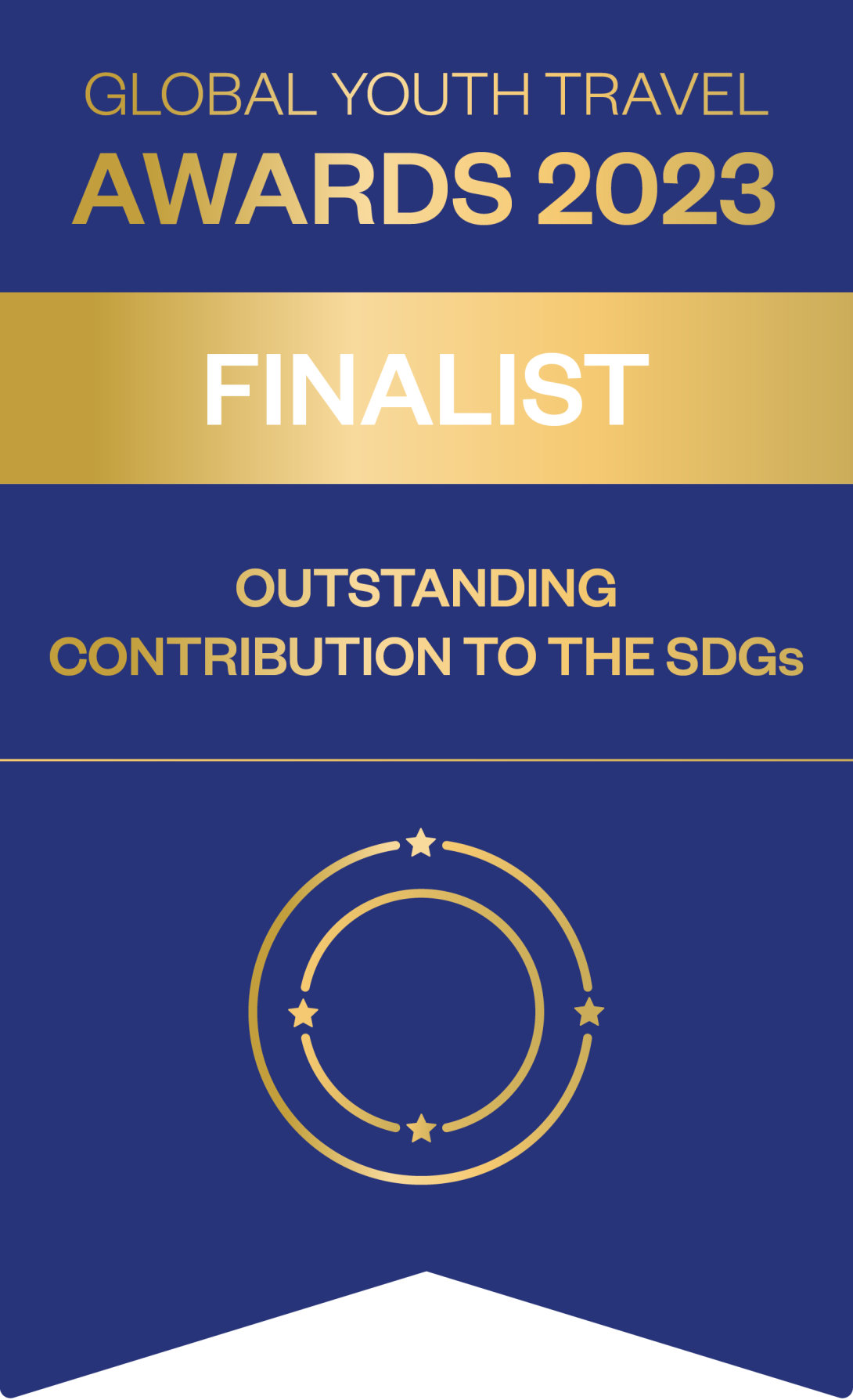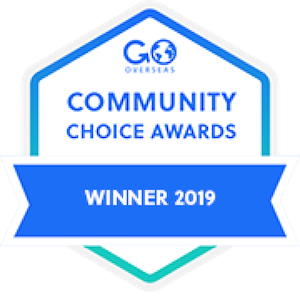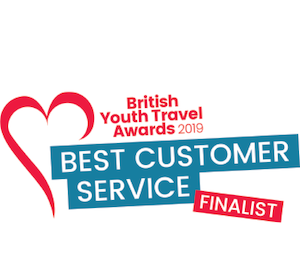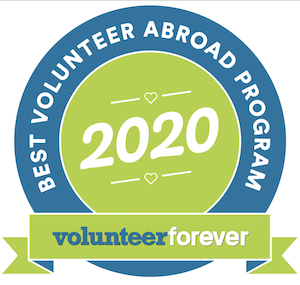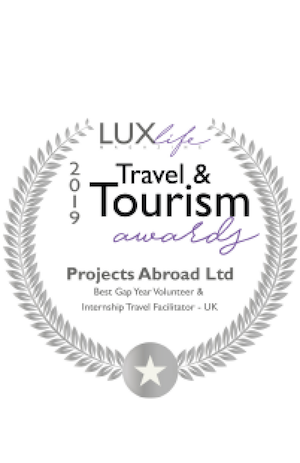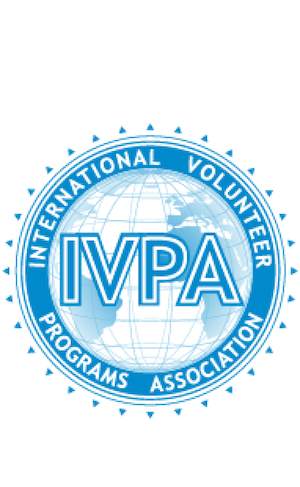Here at Projects Abroad we love to share the stories of our volunteers. Read below to see part three of Sara's year long adventure. Or if you've missed it, check out part one here. She travelled with Projects Abroad for almost an entire year in 2019 and 2020. Sara joined a variety of projects in Mexico, Peru, Sri Lanka, Thailand and Cambodia!
The journey there
And then it was Monday 16 September and time to leave Taricaya. It was a dividing time, not only was I leaving the Latin leg of my journey, I was also going to be celebrating my 66th birthday en-route and changing from Latin countries to Asian. My flights took me from Puerto Maldonado to Lima, Lima to Madrid, Madrid to Doha, Doha to Colombo arriving on 18 September.
It was all quite straight forward and unemotional until I reached Madrid. So close to home but not actually going there for another seven months. With technology as it is, I didn’t feel out of touch with family or friends but knowing I was in Europe and only two hours away was very strange. Of course it was my birthday too and sitting in an airport isn’t the most exciting way to celebrate. However this next leg from Doha I was flying with Qatar Airways, one of the most relaxed, efficient and comfortable ways to travel. I just love them. I had a few hours before my connection and once I’d eaten I found myself a lounger in the sleeping area and settled down to wait and snooze a bit.
On landing in Colombo, I was collected by my Projects Abroad driver and taken to meet my host family. Such a welcoming, warm family of Rosi and her husband, their three daughters and her father. Their house was very spacious and the rooms extremely large, basically they kept the first floor for volunteers to use and could accommodate up to nine of us at a time. In reality there were four for most of my stay so we each had a room on our own. Marble floors, cold showers, fabulous food, mosquito nets and the beginning of monsoon season. I had arrived in Sri Lanka!

The Temple
My project co-ordinator, Amir, arrived the next morning to show me around the area and introduce me to Nandana, the Principal monk, at the Temple School where I was to teach. We took a bus, an experience in itself, and arrived at a beautifully decorated gate in a very peaceful setting. A huge white domed stupa decorated with flowers and the Buddhist flag stood centre stage, surrounded by school rooms, offices and further back on the property the living quarters for the young monks.
We were politely asked to remove our shoes before being ushered into the Senior Head Monk. A long conversation ensued between Nandana and Amir, with very brief and occasional translation to me.
The Temple School houses about 20 young monks and educates local boys aged 8-18 years. The school is taught by lay teachers and lessons begin at 8.00am until lunchtime. The young monks worship and study their Buddhist texts in the mornings, rest a little and in the afternoon lessons begin in their schoolroom.
Before my first day I had to buy suitable clothing to wear when I was teaching. This involved petticoats and vests, things I had not worn for decades. A demure white shirt and below the knee skirt were appropriate.
By European standards it is hot in Sri Lanka year long, and whereas we wear a thin t-shirt or cotton dress in the summer, here a vest is de-rigueur. It is actually very sensible as your outer shirt keeps dry and clothes do feel more comfortable. However the speed with which one walks has to be severely reduced, no London commuter-speed walking here. Rosi gave her approval and off I set for my first afternoon teaching English.
Amir had given me the bus numbers which passed the temple street and various landmarks to check so I knew I was getting close to my stop. It’s funny how when you are being shown it all seems so easy and then on your own nothing is quite as you remember it. So the first day I got off the bus about a mile further on, walked back and forth not recognising anything until I gave in and hailed a passing tuktuk.

The temple buildings are very impressive, standing back from a grand gate decorated with elephants, lotus carvings and intricate pattern. The Buddhist flag of blue, yellow, red, orange and white hung as bunting from the flag poles, and completely covered the ceiling of the schoolroom. The school appeared empty as I arrived, rooms and offices quiet, finally I found the staff room but was politely but firmly steered into the school principal’s office with promises of tea. I observed teaching that afternoon, and the following day I was thrown in at the deep end teaching the students. The young monks were delightful, a little shy, extremely well behaved and with very mixed language ability. I had my work cut out.
The textbooks I was given as a guide, I found very unhelpful, the language was old fashioned and only related to Buddhist teachings. Although obviously relevant to them the topics chosen to introduce vocabulary were not easy to use in conversation and I was met with blank stares and incomprehension. So I changed to creating a list of nouns next to an explanatory drawing with a suitable verb to make sentences and this worked very well for the Grade 1 and 2 groups I was teaching.
I also worked at a Government School assisting with Grades 3-6 each morning and continuing two afternoons each week at the Temple. If the Temple was serene and gentle, St John’s Primary was the complete opposite – chaotic and noisy. Children screeching, teachers shouting, neither hearing the other. I inwardly groaned. This really was not what I had in mind when planning my time in Sri Lanka.
The school day is 8.00am until 1.30pm and I was to be there each morning and on Monday and Friday afternoons continue at the Temple. At last a time-table was set, I began to feel better, it had been quite bewildering especially after living in a close-knit, directed community at Taricaya. And it was this change from being in a group to being on my own and having to re-establish boundaries and expectations in my new family that I found the most difficult.

Exploring Colombo
There were two other volunteers in the house when I arrived, both very quiet. On my first weekend they packed their bags and set off to Galle to meet some of the other volunteers. They had planned a little RnR at the beach with a surf lesson and were greatly looking forward to getting away from the somewhat busy town setting we were in. I hadn’t really thought about what to do myself but decided a trip into Colombo would be a good place to start.
I took a bus which rumbled and shook its way, getting ever fuller, as we approached the centre an hour later. I had looked on Google maps with my phone and decided to get off at The Fort. On the map it looked a good place to start, however when I got there the area was deserted, literally no one about and very few cars. It was very hot and at this stage I had not bought an umbrella so had no shade.
I set off walking in the direction that I thought would take me to the beach, a few yards later and a tuktuk driver stopped, “Madam, I will take you on a tour of our city”, “No, no thank you, I’ll be fine” I said. A few minutes later the next tuktuk pulled up, I was beginning to feel harassed, however he looked so concerned and suggested that at least “let me take you out of the heat and somewhere you can sit.” I must have been looking rather flustered and perhaps red in the face! Anyway I agreed, we started chatting and he asked if I had seen the Gangaramaya Temple. This lovely man then very proudly took me on a private tour of Colombo. He waited patiently whilst I visited the sites he suggested and pointed out other places of interest. All this for LKR500 which was about £2.50.
Gangaramaya is absolutely breathtaking. The colours are startling, paintings cover the walls and ceilings depicting the life of the buddha. Giant buddha sit grandly on decorated plinths surrounded by smaller statues of devotees. This first worship room is quite small and is really quite awe-inspiring. The building as a whole is huge and houses museum rooms and other worship areas too. Tourists need to pay an entrance fee which allows for photography and obviously the upkeep of the buildings.
I found my way back to the tuktuk driver and we went on to a nearby Hindu Temple, a very different experience but just as worthwhile. Sri Kailawasanathan Swami Devasthanam again is extremely ornately decorated and highly coloured. Statues of the gods piled one on top of the other creating a huge cone-shaped tower, smaller separate shrines for specific gods and an area for blessings. In both temples you must remove your shoes and leave them at the door.
I felt much more settled after spending this day in Colombo, finding my own way and sight-seeing.
Expectation vs Reality
From what I had seen in my first week, Sri Lanka was not quite what I was expecting. It is not as colourful or as noisy. The women predominantly wear Western styled clothes, a longish A-line skirt with an over-blouse and sandals or flip-flops. Despite the many sari shops they are only seen occasionally.
Having spent a great deal of my life living in London, I realised that my knowledge of this part of the world was really governed by the people I saw and met there. Of course most are from India and Pakistan where the dress is entirely different. So very quickly I realised that any pre-conceived ideas I had about anywhere in the world should be dismissed before I saw for myself. I had had the same feelings in Mexico and Peru but it had taken me to arrive in Sri Lanka for that thought to really sink into my head.
I spent the next few days wondering what I was doing on these extended travels, what did I hope to achieve and why didn’t Sri Lanka “speak” to me as I had expected. To understand this I need to explain that I grew up hearing stories about the life my grandparents led in Ceylon, as it was then called. They managed a tea plantation high up in the Hill Country and it was there my father and his brothers were born.
But back to now, and how to cope with the reality of living in Panadura at monsoon time? My goodness I have never seen rain like it, people struggle along trying to stay a little dry under an umbrella but still wearing flip flops and wading through puddles.
It is humid, there are flies and mosquitoes everywhere and I was struggling to see the benefit of this experience just now.

Teaching at the Primary School
However, the time had come for my first full week at the Government school to begin. I arrived at 8.00am as requested to be introduced to Hemali, the dedicated English teacher, and dedicated is the word in all senses. She is passionate about teaching, children’s development and English; it is all she teaches and she does so with gusto and determination.
A wail of noise and pounding feet and suddenly the room was filled with 40 small children all shouting and scrabbling to find a table and sturdy chair. Much moving of furniture and finally they began to settle. Hemali had been screaming instructions as I stood watching in a bewildered state. I was introduced and the children began to sing,
“Good morning to you. How do you do? I’m happy to see you. Good morning to you.”

This wasn’t especially for me, but the way they started their day. I think it was supposed to calm them down a bit – it worked for about five minutes!
The children are delightful, curious and extremely noisy. The children learn by rote and although I was taken aback at first, kept asking me how old I was and where I lived. Looking through their exercise books, their first lesson – What is your name? My name is ….. Where do you live? I live in ……. etc, etc. so it became clear they were just practising their lessons and not being rude!
They loved having their photos taken and constantly asked for “selfies, they really are the most delightful and engaging children. When it was time to say Goodbye I was given a huge pile of handmade thank you cards.
Community Work
My Project was not all about teaching, as volunteers on medical and healthcare projects were there too, so we also had Group community days organised. One day we went to redecorate the buildings of a village school, another, as minor celebrities, we attended a community festival where children danced, sang and exhibited their artworks, with long, incomprehensible speeches of appreciation made, and followed by our prize-giving of books and pencils. At other times we set up a free health screening care room, and overseen by the doctors we checked the weight, height, blood pressure and sugar levels of local residents. It is easy to feel that what one is doing on these volunteer projects amounts to not much, but even these little outreach programmes keeps a poor community a little safer.

My journaling took a bit of a rest as I tried to accept and settle into life in Sri Lanka. I was living with a lovely family and the other volunteers were friendly and engaging, Hiyato and I were staying for the longest time so we saw people come and go on a weekly basis. This can be disrupting in a family home-stay placement but also means you get to meet a lot of new volunteers.
If you join a project for more than two months you can take a “holiday”. I had been in Sri Lanka two of my three month stay by this time and I decided a week off was in order. I found a wonderful travel company, USP Lanka Tours and booked a driver, Nishan, to be my tour guide. We planned the route to include as many of the temples, towns and natural sites as we could.
Sri Lanka is a stunningly, beautiful country filled with wonderful temples, waterfalls, elephant sanctuaries and vast plantations of tea. Definitely worth a visit. 5* for tourists. I spent a wonderful week touring the Hill Country and then taking the train and local ferry to Kovil.
By now it was early December and my next Project was to be Marine Conservation in Thailand. I was going to learn to dive…
Sara went on to volunteer in two other destinations over the course of a year. Her next destination was Thailand, where she joined a Marine Conservation Project and learnt to scuba dive!
Check out Part 4 of Sara's story here!
If Sara's story has inspired you to Teach abroad, or to take an adventure with Projects Abroad, check out a collection of similar projects:
This is a personal account of one volunteer’s experience on the project and is a snapshot in time. Your experience may be different, as our projects are constantly adapting to local needs and building on accomplishments. Seasonal weather changes can also have a big impact. To find out more about what you can expect from this project we encourage you to speak to one of our friendly staff.
Our accreditations


